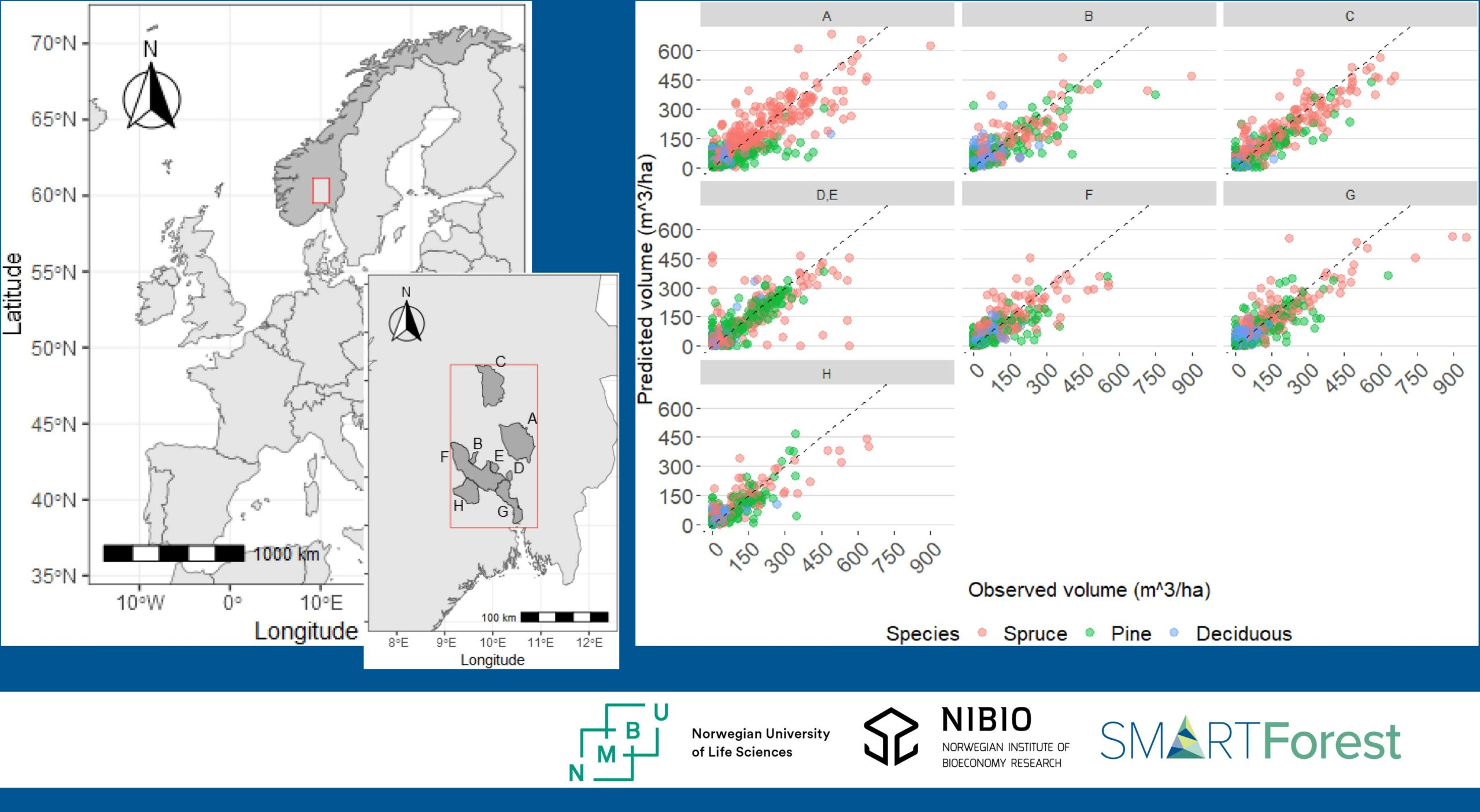A new article was just published on
Predicting tree species composition using airborne laser scanning and multispectral data in boreal forests!
Congratulations to the authors Jaime Candelas Bielza, Lennart Noordermeer, Erik Næsset, Terje Gobakken, Johannes Breidenbach and Hans Ole Ørka!
Tree species composition is essential information for forest management and remotely sensed (RS) data have proven to be useful for its prediction. In forest management inventories, tree species are commonly interpreted manually from aerial images for each stand, which is time and resource consuming and entails substantial uncertainty.
The objective of this study was to evaluate a range of RS data sources comprising airborne laser scanning (ALS) and airborne and satellite-borne multispectral data for model-based prediction of tree species composition.
Total volume was predicted using non-linear regression and volume proportions of species were predicted using parametric Dirichlet models. Predicted dominant species was defined as the species with the greatest predicted volume proportion and predicted species-specific volumes were calculated as the product of predicted total volume multiplied by predicted volume proportions.
Ground reference data obtained from 1184 sample plots of 250 m2 in eight districts in Norway were used. Combinations of ALS and two multispectral data sources, i.e. aerial images and Sentinel-2 satellite images from different seasons, were compared.
The most accurate predictions of tree species composition were obtained by combining ALS and multi-season Sentinel-2 imagery, specifically from summer and fall.
This study highlights the utility of remotely sensed data for prediction of tree species composition in operational forest inventories, particularly indicating the utility of ALS and multi-season Sentinel-2 imagery.

